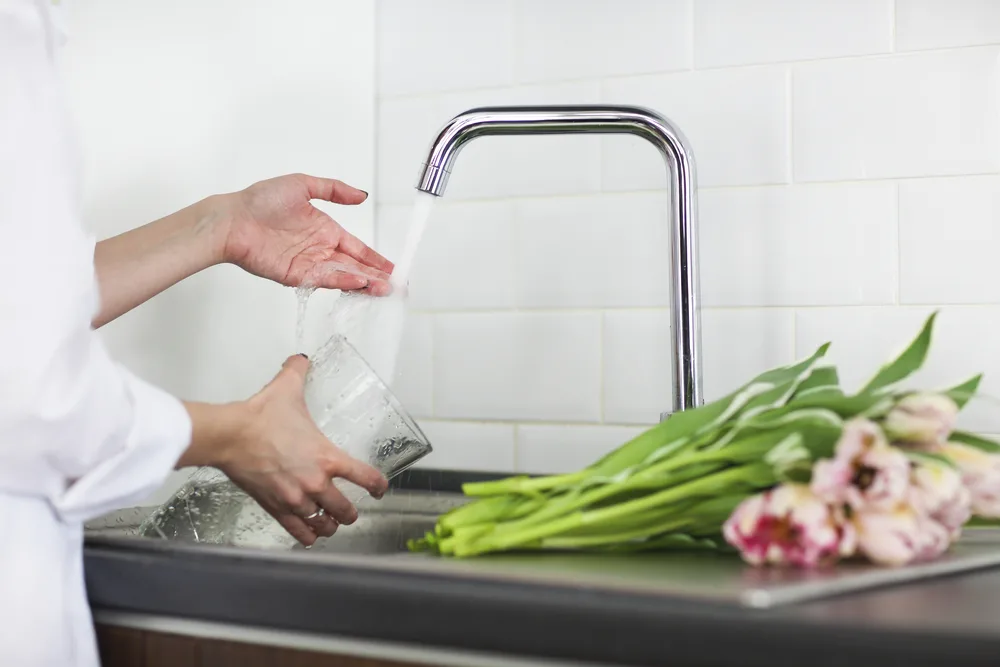Vases should be washed thoroughly in early summer and summer to prolong the enjoyment of flowers. As the temperature rises, bacteria in the vase will increase and rot the stems of your new flowers. Even if you change the water, a dirty vase can become contaminated the moment you put it in, so every time you change the water, rinse it with at least water and, if possible, scrub it with a sponge to remove dirt. The washing method introduced is also recommended for narrow mouth vases.
How often to wash vases and water changes

♦ Reasons for washing and changing water in vases
Before we discuss how often to wash a vase, why do we wash and change the water in a vase in the first place? The reason is that bacteria can multiply on the flowers and in the water, shortening the life of the flowers and causing them to wither prematurely. Another reason is simply that water stains and water clouding can make the vase look unattractive.
♦ How often to wash vases and how to make them last longer
Basically, the ideal frequency for water changes is once a day, so we recommend washing the vase with a sponge and regular mild dish detergent at that time.
If once a day is too difficult, it may be a good idea to cut back the stems once every two days, which is recommended to cut the tips of the stems by about 1 cm to prolong the life of the flowers.
Also, it is recommended to wash the flowers and cut back 1 cm of the stem tips at the same time as washing the flowers, and to thoroughly wash off the sliminess on the stems, which is also caused by bacteria.
Four easy methods for cleaning vase

♦ Washing with detergent
If the vase is not too dirty, add a little kitchen detergent, shake gently, and rinse.
♦ Using eggshells
Crush the eggshells. Put the crushed egg yolk and water into a vase, cover the mouth of the vase, and shake the vase.
Do not crush the eggshells too finely, as this may scratch the glassware.
♦ Wash with acrylic yarn
Shaking a short piece of acrylic yarn in a vase will have the same effect as eggshells.
♦ Wash with bleach
If you think, “The vase is badly stained and I want to wash it once and for all,” then add bleach to the vase and let it sit for a few hours. However, we do not take this method for expensive china because we do not know how bleach will affect it.
You don’t have to worry that the detergent or bleach will remain in the pot after rinsing and will be bad for the next plant.
Some people even go to the trouble of adding detergent and bleach to their pots when they are ready to grow. (If you do, be careful not to overdo it; a few drops is about right.)
Both have disinfectant properties and help prevent water contamination.
How to maintain the vase

- Regularly wash and clean the stains on the outside of the vase and the water and sand on the inside. Avoid the use of steel wire rubbing and other hard objects to avoid scratching the surface of the vase.
- Regular water changes to prevent long-term sewage soaking stained vase walls, and the water in the vase for too long will breed many microorganisms, may corrode the vase.
- Vase is fragile, to avoid hard objects collision, collapse.
Tips for prolonging the life of fresh flowers

Now that we have introduced the care of vases, here are some tips that you should know to make your fresh flowers last longer. Just by taking a few simple steps, you can increase the longevity of your fresh flowers.
♦ Adjust the frequency of water changes
Do you leave flowers in the ground without changing the water after arranging them? Water is absorbed by the flower and of course evaporates, so if you leave the water on the flower, it will not be enough. Fresh flowers live by absorbing water on a daily basis. To keep the flowers alive and displayed for a long time, change the water frequently to let the flowers absorb new water and keep them fresh.
If you neglect to change the water, the vase will become dirty, creating a vicious cycle, so replace the water with fresh water every two days or so, and wash the vase at that time.
♦ Introduce a life-extending agent
If you are concerned about the wilting of flowers after water changes, it is recommended to introduce a nutrient called a “life-extender. Life prolonging agents are available at florists and home centers. Appropriate use of a life prolonging agent will nourish cut flowers and allow them to absorb the nutrients in combination with water, allowing you to enjoy fresh flowers in a beautiful condition for a longer period of time.
It is necessary to be careful about the frequency of use, but once introduced, the flowers can be prepared for healthy fresh flowers. In addition, the life-prolonging agent can be used for multiple purposes, including flowers planted in soil, so if you like plants, you can use it for many things if you have one.
Fresh flowers, including cut flowers, often have a short life span and can only be enjoyed for a few days if left alone. If you use life-prolonging agents and water changes properly, you will be able to enjoy fresh flowers for as long as possible, become attached to them, and display them in vases more often.


